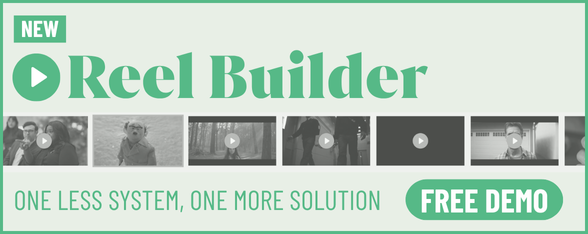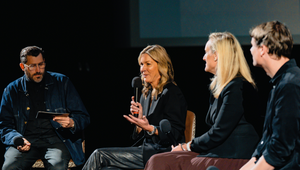
DEI: Accelerating Change with Jessica Farrell

Jessica Farrell, general manager, people and culture – DE&I, Publicis Groupe ANZ is focused on fostering an inclusive workplace through delivering a people strategy and program of work that celebrates and supports its people and recruits more diverse talent. This includes flexible working arrangements, including allowing employees to swap a public holiday for another date of significance in respect of differing beliefs; our supportive paid leave entitlements, including Gender Affirmation Leave, Fertility Treatment Leave and Menopause Leave; and employee action groups, which celebrate differences in identity, background and culture.
LBB> What drew you to the field of DE&I?
Jessica> DE&I has always been deeply personal for me. Before it became my job, it was something I championed naturally - whether it was advocating for underrepresented talent, challenging biases in hiring, or ensuring that company policies reflected real inclusion, not just performative statements. I’ve always believed that workplaces should be designed to unlock the potential of all people, not just those who fit the traditional mold of success.
LBB> Before it became your job role, what was your specialism? And how did you get involved?
Jessica> I’ve spent my career in people and culture and currently lead a team across the advertising, media, and creative industries. My background is in HR strategy, leadership, and transformation, with a strong focus on embedding people-first cultures within businesses. Working for large scale consumer facing brands gave me a front-row seat to how workplace culture directly impacts performance, creativity, and innovation.
Over time, I saw how systemic barriers, from hiring biases to leadership representation gaps, held brilliant people back. I moved into DE&I not because it was a trend but because it was the work that truly mattered to me.
LBB> There’s a lot of frustration around the industry’s glacial pace when it comes to improving DE&I across all sorts of axes. What’s getting in the way?
Jessica> There’s no shortage of commitments, statements, and training sessions, but the challenge is accountability and systemic change. Our industry is still deeply influenced by legacy structures where networks of privilege continue to shape hiring decisions, and DE&I is often treated as a ‘nice-to-have’ rather than a business imperative.
Another major roadblock is resistance to discomfort. Real change requires disrupting the status quo and rethinking who gets access to opportunities, who gets promoted, and how business is done. Many organisations want the results of diversity (innovation, fresh perspectives) without the real work of inclusion (challenging biases, shifting power structures).
LBB> Outside of the advertising industry, where do you see examples of large-scale meaningful progress (if at all), and what should our industry learn from it?
Jessica> Several industries are leading the way. Westpac has embedded DE&I into its business through clear targets, public reporting, and strong Indigenous engagement. Kenvue designs inclusive products and ties DE&I to innovation, showing how representation can directly impact customers. McDonald’s links executive KPIs to DE&I goals and leads on inclusive marketing.
The advertising industry can learn from this: real impact comes when inclusion is systemic, measurable, and woven through every part of the business and not just the campaign.
LBB> The dimensions of DE&I can differ somewhat according to geographic/cultural context - I’m curious, where you’re based, what are the big issues or most urgent elements of DE&I that you need to address? (And if your role covers more than one market/territory, how do you and your team navigate the local nuances while having a cohesive and consistent set of values?)
Jessica> In Australia, the urgent DE&I priorities are:
• First Nations Representation: We're focused on creating genuine opportunities for Aboriginal and Torres Strait Islander talent. For example, initiatives like Publicis Groupe’s Born Blak program go beyond token acknowledgements to build sustainable pathways for First Nations content creators.
• Disability and Intersectional Inclusion: We are committed to enhancing visibility and support for neurodivergent individuals as well as LGBT+ women, non-binary, and trans employees, ensuring that inclusion isn’t just about a single dimension.
• Pay Equity and Leadership Diversity: We continue to work on closing gender and cultural gaps, especially in leadership roles.
In my role covering ANZ, navigating local nuances while upholding a cohesive set of DE&I values is essential. We work closely with regional leaders to tailor our initiatives (such as prioritising First Nations representation in Australia and culturally specific programs in New Zealand) ensuring that each market's unique needs are met without compromising our overarching commitment to fairness, inclusion, and accountability. This collaborative, localised approach enables us to drive meaningful change while maintaining a unified global vision.
LBB> In your role, what have been some of the most meaningful projects or policies you’ve been involved in regarding DE&I?
Jessica> Some of the work I’m most proud of includes:
• Launching the 'Rise & Thrive' initiative – A 6-month program specifically for women to accelerate into leadership opportunities.
• The creation of our inaugural Disability Access & Inclusion Plan – A multi-year strategy focused on becoming a more disability confident employer.
• Becoming Australia Workplace Equity Index (AWEI) Bronze certified as part of our work in driving LGBT+ inclusion.
• Intersectional work within our employee action groups by connecting, collaborating and launching multiple new committees focused on cultural diversity, sustainability and parents and carers.
LBB> What role are clients playing in holding agencies accountable and driving better DE&I (e.g. via RFPs)? Is this something you are seeing or would like to see more of?
Jessica> Clients are increasingly influencing agency practices by incorporating DE&I criteria into RFPs through demanding diverse pitch teams, comprehensive supplier diversity reports, and more transparent practices.
While these requirements are a positive step, further change can be driven by linking financial incentives to tangible DE&I outcomes, ensuring accountability and encouraging agencies to embed these values into every aspect of their work.
LBB> We often see DE&I siloed or pigeonholed as an HR issue - what’s the key to ensure that it’s embraced as an agency-wide or industry-wide responsibility?
Jessica> DE&I cannot live in HR alone. It has to be embedded in leadership KPIs, creative decision-making, hiring strategies, and client work.
The key? Tie DE&I to business success. Agencies that are more diverse win more pitches, create better work, and retain talent longer. We also need leaders who model inclusive behaviour. It starts at the top.
LBB> What are your thoughts about where accessibility fits in the DE&I agenda?
Jessica> Accessibility is often an afterthought in DE&I, but it should be foundational. Our partnership with Hidden Disabilities Sunflower and our Disability Access & Inclusion Plan have been critical in shifting that mindset.
Designing workplaces and campaigns with accessibility in mind from day one ensures inclusion is built-in, not bolted on later.
LBB> What resources/platforms/programmes have you found useful on your DE&I journey and would recommend to our readers?
We utilise the support of exceptional partners in the DE&I space, this includes:
• Pride in Diversity - Leading training and resources for LGBT+ workplace inclusion
• Australian Disability Network - Incredible insights on dignified access and disability inclusion
• Hidden Disabilities Sunflower program
• Reconciliation Australia – For support on your First Nations journey
LBB> The scale of the change needed is so massive that individuals can often feel powerless without the levers to move huge structures. What's a more personal act of positivity that you've seen recently that others could look to as inspiration for change on a human scale?
Jessica> Sometimes, inclusion starts with a small, personal act that resonates deeply. I recently witnessed a manager actively adapting communication styles and work processes to support a neurodivergent team member, ensuring his unique strengths were recognised and celebrated.
Additionally, the use of sunflower lanyards really starts to become a powerful symbol of non-visible disability inclusion, reminding everyone that not all challenges are visible, but all contributions are valuable. These gestures highlight that real change is driven by empathy and the courage to make space for everyone.
LBB> If you’d like our readers to take one thing away from this interview, what would it be?
Jessica> Diversity, equity, and inclusion is not just a moral obligation, it’s a fundamental rewiring of how we see talent, leadership, and the future of work.
Too often, we talk about DE&I as a project, an initiative, or a checkbox, but in reality it’s about power -- who has it, who shares it, and who is excluded from it. True inclusion isn't about giving people a seat at the table; it’s about redesigning the entire room so that everyone belongs from the start.
The next decade of progress must not be about performative statements, but deep, systemic change. This means leaders who are brave enough to dismantle outdated systems, teams that challenge bias at every level, and organisations that stop hiring for ‘culture fit’ and start hiring for culture add.
Real transformation doesn’t happen in policies, it happens in moments. It’s in the manager who advocates for a team member who isn’t being heard, the executive who ties diversity targets to leadership KPIs, the designer who makes accessibility a standard, not an afterthought.
If you take one thing away, let it be this: DE&I is not about helping others, it’s about all of us. Because when we remove barriers, we unlock human potential. And when we unlock human potential, we create businesses, communities, and futures that are truly limitless.














